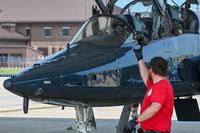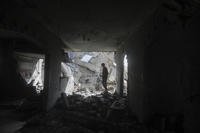
The massive Russian air, ground, and naval assault against the country of Georgia is certainly reminiscent of the earlier Soviet assaults against East Germany and Hungry, and, to some degree, the Russian campaign in Chechnya. But there are major differences in the cause of the current conflict and in the world political-military situation from those earlier military operations.
At this writing there were strong indications that the odd situation in the Georgian provinces of South Ossetia and Abkhazia could have only led to conflict. The border provinces appear to have had Russian peacekeepers in them to protect the interests of the local populations that include many Russian citizens and sympathizers. According to Russian sources, Georgian troops attacked those Russian troops, although the exact circumstances of the initial exchange are unknown.
In response, after a brief delay, Russian forces invaded the two provinces, taking control after inflicting heavy civilian casualties -- some press reports cited approximately 2,000 deaths. But the Russian troops, carried in armored personnel carriers and supported by aircraft and helicopters, continued into Georgia, reportedly coming within 12 miles of the Georgian capital of Tbilisi.
In addition to civilian (and military casualties), Georgia has suffered perhaps 100,000 people being uprooted, and severe damage to towns and cities.
Georgian troops -- trained and partially equipped by the United States -- were unable to withstand the Russian onslaught. As this blog was written it appears that the Russian government has accepted the truce, brokered in part by the French government.
Why did the Kremlin order the land-air-sea assault on its weaker neighbor? Obviously, the Russian regime is concerned about South Ossetia and Abkhazia and their large Russian populations. There were certainly other factors. American influence in Georgia has been increasing over the past few years; when the Russian assault began there were 35 U.S. civilian contractors and almost 100 military personnel in Georgia to help train the army. More than 1,000 U.S. troops -- including reservists and national guardsmen -- were recently in Georgia for a joint exercise.
Further, Georgia has been seeking full membership in NATO. The continued expansion of NATO since the end of the Cold War, especially including Eastern European states, has particularly been a concern of the Russian government. This situation has been exacerbated by recent U.S. proposals to build advanced X-band ballistic missile detection radar in the Czech Republic and base ten interceptor missiles in Poland. The stated rationale for these installations is to protect Western European countries from long-range missiles launched by rogue states, including Iran. The perspective from the Kremlin, however, is that these defenses -- and other U.S.-sponsored military activities -- as well as the missile defenses are part of an American campaign to encircle the Russian state.
Thus, some Western officials and analysts see the Russian action in Georgia, beyond the obvious intent of protecting Russian citizens and sympathizers in the border provinces, as a clear message to the United States that further expansion American political-military influence in Eastern Europe will not be tolerated.
Meanwhile, the U.S. government is attempting to gain support for political actions by Western European countries and the United Nations, hopefully to censor Russia. There is no possibility that the United States will take military action against Russia, or immediately rush to the support of the shattered Georgian army.








